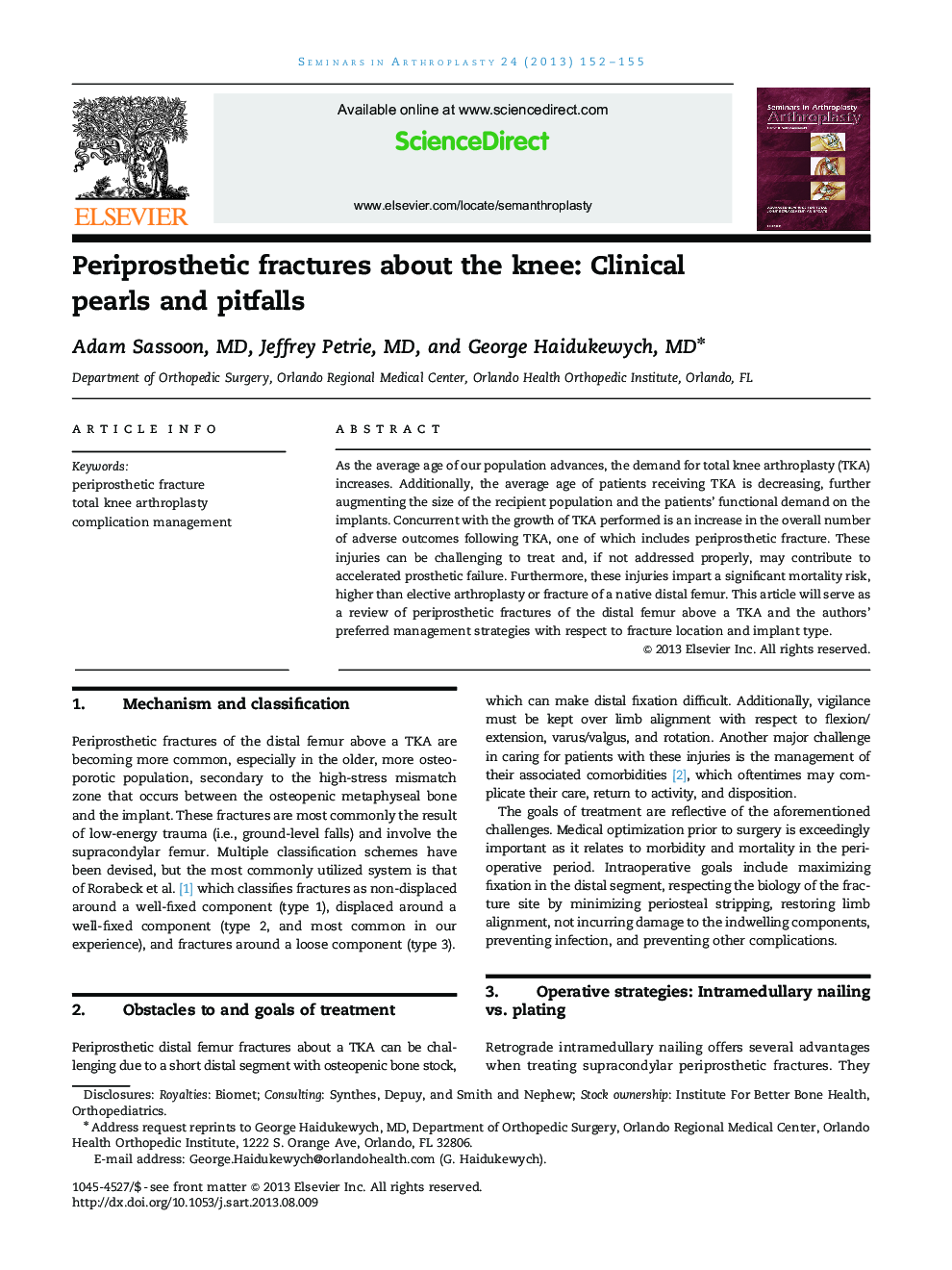| Article ID | Journal | Published Year | Pages | File Type |
|---|---|---|---|---|
| 4094002 | Seminars in Arthroplasty | 2013 | 4 Pages |
As the average age of our population advances, the demand for total knee arthroplasty (TKA) increases. Additionally, the average age of patients receiving TKA is decreasing, further augmenting the size of the recipient population and the patients’ functional demand on the implants. Concurrent with the growth of TKA performed is an increase in the overall number of adverse outcomes following TKA, one of which includes periprosthetic fracture. These injuries can be challenging to treat and, if not addressed properly, may contribute to accelerated prosthetic failure. Furthermore, these injuries impart a significant mortality risk, higher than elective arthroplasty or fracture of a native distal femur. This article will serve as a review of periprosthetic fractures of the distal femur above a TKA and the authors’ preferred management strategies with respect to fracture location and implant type.
